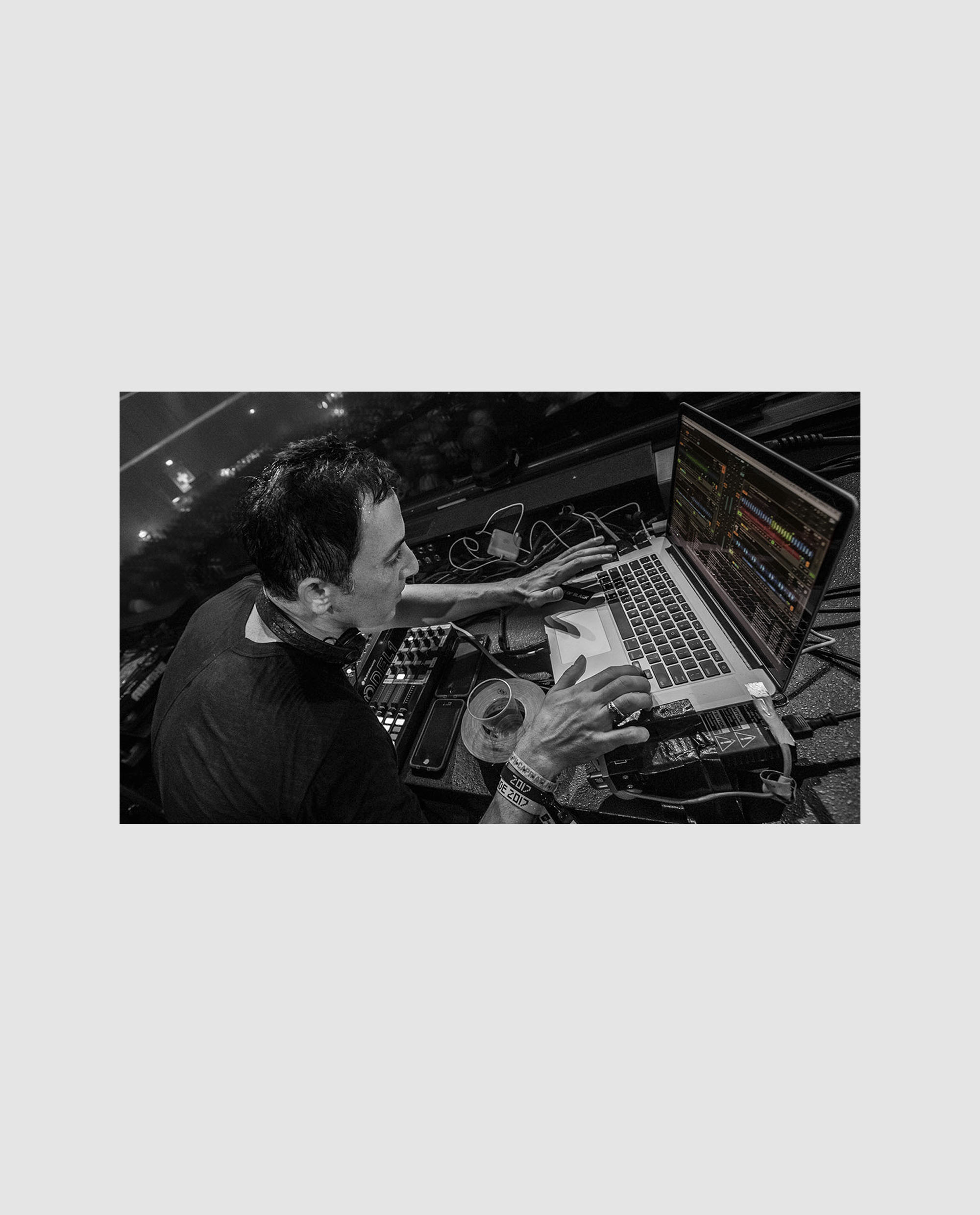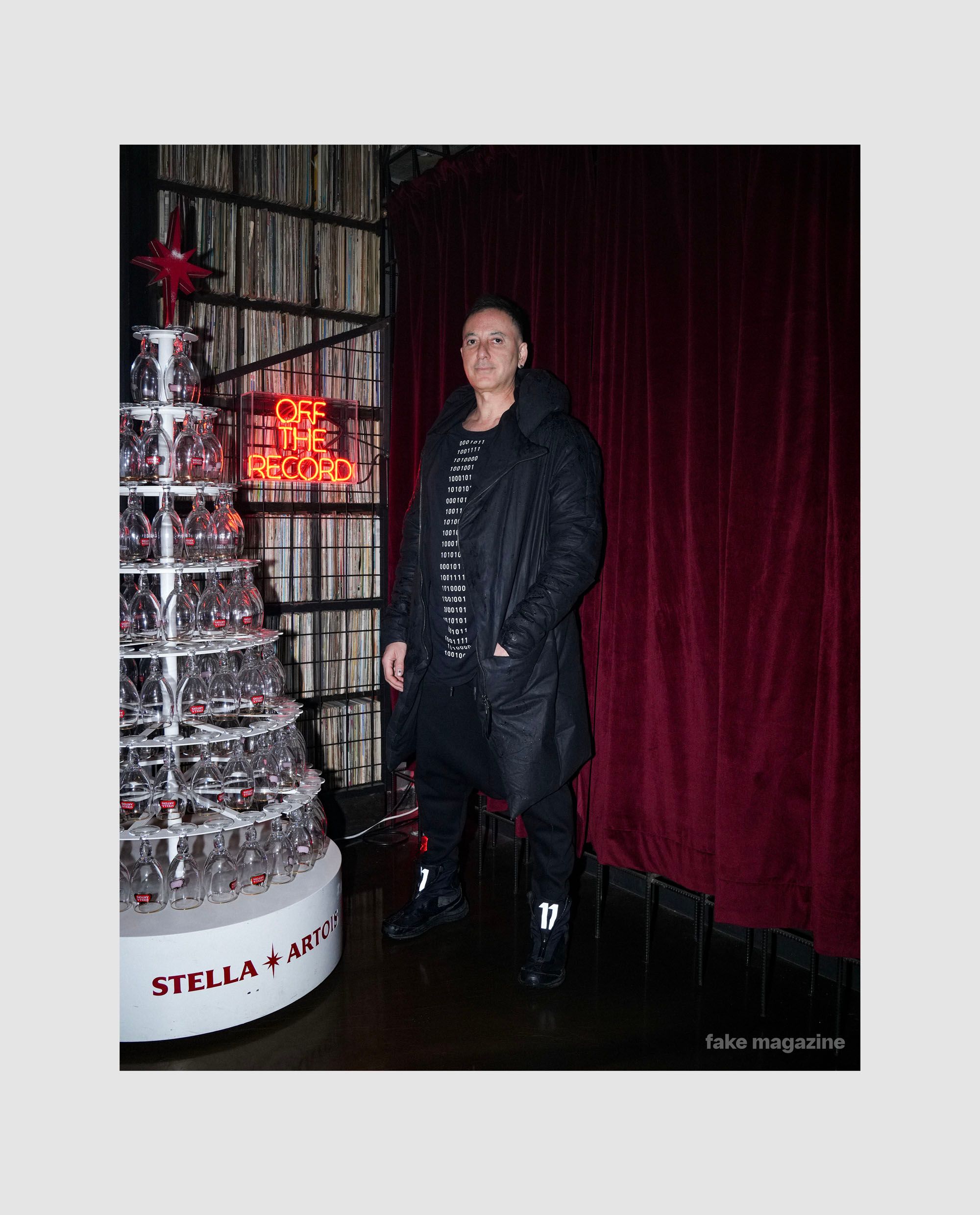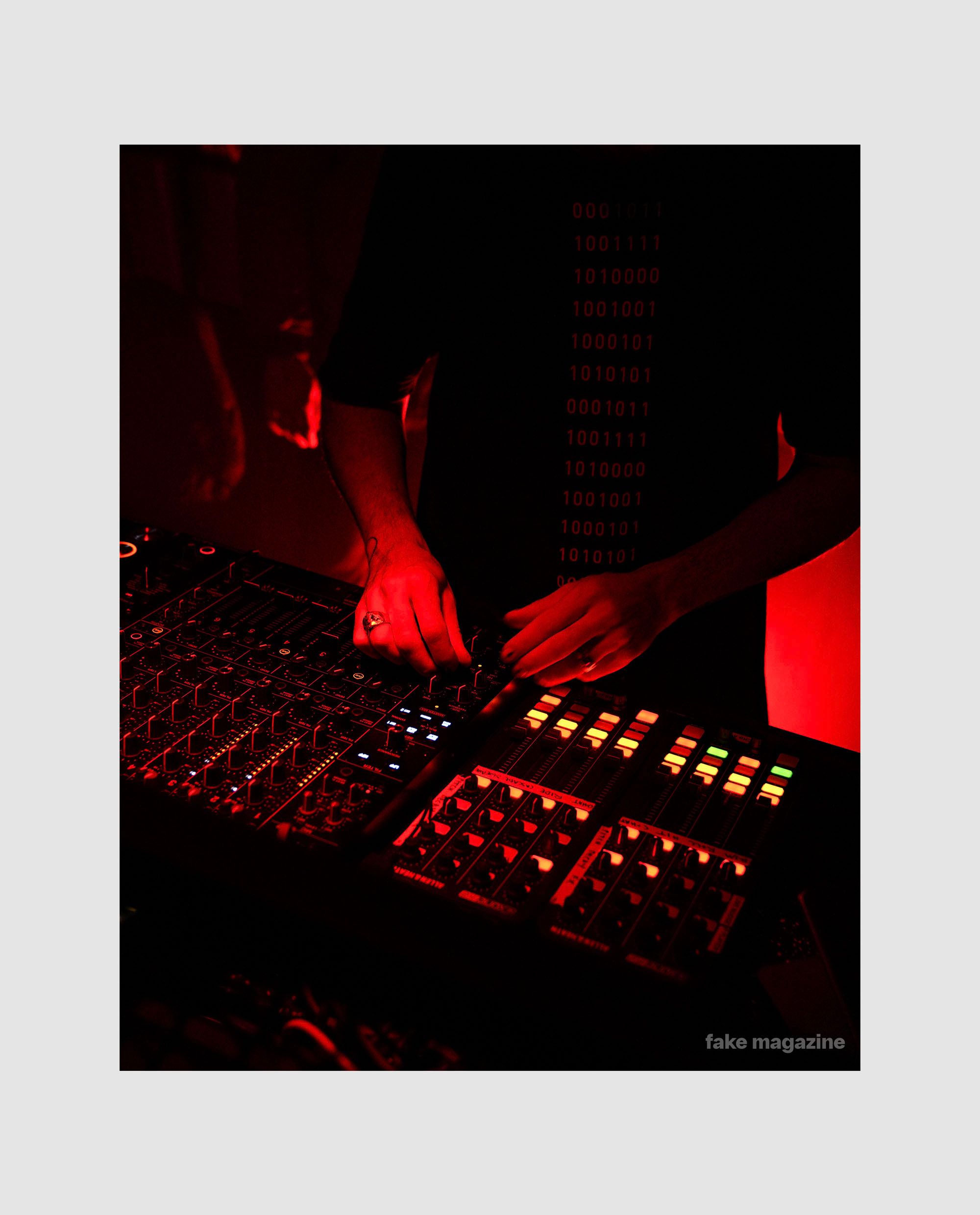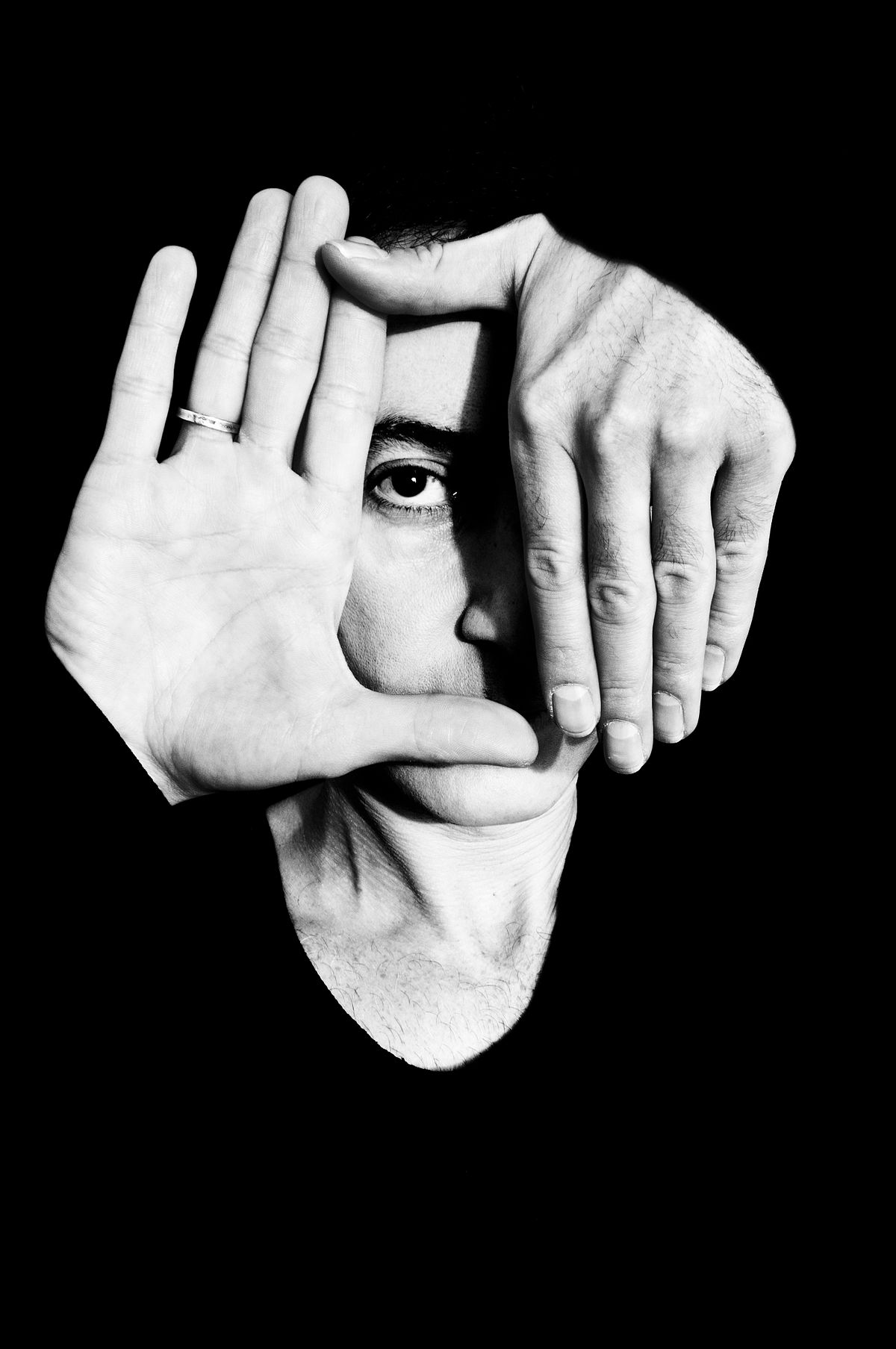DUBFIRE (덥파이어)
ㅇ
전자 음악 신에서 'Dubfire(덥파이어)'는 늘 복합적인 위치에 있었다. 테크노의 본질을 유지하면서도 미니멀리즘과 감정, 실험성을 동시에 추구해온 아티스트. 'Deep Dish(딥 디쉬)' 시절부터 솔로 활동, 그리고 다시 팀으로 돌아오기까지 그는 한 번도 같은 지점에 머물러 있지 않았다.
음악적 태도는 철저하지만, 그의 내면은 유연하다. AI, 멘토십, 창작과 번아웃, 그리고 요리와 공간에 대한 감각까지. 이번 인터뷰에서 그는 자신의 여정과 시선, 그리고 다음 세대를 위한 조언을 가감 없이 풀어놓는다.
정제된 어휘, 간결한 구조, 분명한 주제의식. Dubfire는 지금, 또 다른 챕터를 준비 중이다.

Q. 만나 뵙게 되어 반갑습니다. 먼저, 간단한 자기소개 부탁드립니다.
Q It is a pleasure to meet you. Could you please introduce yourself briefly?
A. 반갑습니다, 저도 만나 뵙게 되어 기쁩니다. 저는 'Dubfire(덥파이어)'라고 합니다.
오랫동안 전자 음악의 어둡고 미니멀한 영역을 탐험해 온 아티스트입니다. 1990년대 초 'Deep Dish'라는 듀오로 활동을 시작했지만, 시간이 지나면서 보다 실험적이고 테크노 중심의 사운드에 이끌리게 되었죠. 저는 항상 장르보다는 감정의 울림, 질감, 긴장감에 더 집중해왔습니다. 몰입감 있고 내면을 들여다보게 만드는, 때로는 약간 불편할 정도의 음악을 원하는 이들을 위해 사운드를 만들어갑니다.
A. Likewise, the pleasure’s mine. I go by Dubfire—an artist who’s been exploring the darker, more minimalistic corners of electronic music for quite some time now. My journey began in the early ’90s as one-half of Deep Dish, but over time, I felt the pull to pursue a more techno-rooted, experimental path. I’ve always been driven less by genre and more by emotional resonance, texture, and tension. I create music for those seeking something immersive, introspective, and occasionally unsettling.
Q. 작년에 이어 올해도 서울을 다시 찾았는데, 이번 방문이 특별한 이유가 있을까? 한국에서의 공연이 주는 특별한 감정이나 기대하는 점이 있다면 무엇인가
Q. The intense energy experienced in Dubfire’s hybrid sets, combined with the smooth interaction with the audience, always brings a unique emotional experience. After performing in Seoul last year and this year, are there any particular impressions or observations you have made? What aspects did you prioritize when connecting with the audience through music in Seoul?
A. 한국 관객들에게는 정말 신선하게 다가오는 진심이 있습니다. 그들은 SNS를 위해 흥분한 척 연기하지 않고, 정말로 음악을 느껴요. 서울은 전통을 품은 동시에 미래적인 이중성을 지닌 도시인데, 그건 제 음악 셋(set)이 지향하는 방향성과도 잘 맞습니다.
한국에서 공연할 때 저는 감정의 흐름을 가장 중시합니다. 관객들을 일종의 사운드 내러티브 안으로 천천히 끌어들이며, 최면과 카타르시스를 오가는 리듬을 설계하죠.(웃음) 저는 무드를 장악하기보다 함께 조율하고 싶다는 입장입니다. 한국은 그런 섬세하면서도 열린 에너지를 가진 나라이기에 이런 음악적 소통이 가능한 거 같네요.
A. There’s an honesty in the Korean crowd that I find deeply refreshing—they don’t perform excitement for social media; they feel it. Seoul has this duality: ultra-futuristic yet still rooted in tradition, and that mirrors a lot of what I aim for in my sets. When I perform there, I prioritize emotional pacing—drawing people into a sort of sonic narrative that balances hypnosis with catharsis. I want to tap into the collective mood, not dominate it. Korea, with its open-yet-discerning energy, makes that dialogue possible.



Q. 세계 곳곳을 다니며 다양한 클럽과 공연장을 경험했을 텐데, 특별히 기억에 남거나 애정이 깊은 공간이 있다면
Q. Is there a club or venue you particularly cherish around the world? What is the reason for your fondness? Could you reflect on a venue that holds significance both in the past and present?
A. 브라질에 있는 “Warung”이라는 클럽은 제 마음속에 아주 특별한 자리를 차지하고 있어요. 단순한 클럽이 아니라, 밀림 가장자리에 자리한 사원 같은 곳이에요. 뒤로는 바다가 펼쳐지고, 나무들 사이로 안개가 깔리는 새벽, 해가 떠오르는 순간에 춤을 추는 건 마치 신화 속에 들어온 듯한 원초적인 감각을 느끼게 합니다. 그곳에서 공연할 때마다 단순한 뮤직 셋(set)이 아닌, 거의 영적인 체험에 가까운 감정을 받습니다.(웃음)
우리가 처음 이 문화를 사랑하게 된 이유, 공동체, 연결, 초월 그 모든 걸 다시 일깨워주는 공간이에요. Warung은 시간이 흘러도 변하지 않기를 바라는 곳입니다.
A. Warung, in Brazil, holds a special place in my heart. It’s not just a club—it’s a temple perched at the edge of the jungle, with the ocean as its backdrop. There’s a primal energy there, something almost mythological about dancing as the sun rises and mist rolls in off the trees. Every time I play there, it feels more like a spiritual experience than a gig. It reminds me of why we fell in love with this culture in the first place—community, connection, transcendence. Warung is timeless, and I hope it always stays that way.
Q. 곡 작업의 영감은 주로 어디서 얻는 편인가? 스튜디오에 오래 머무르며 아이디어를 끌어내는 편인지, 혹은 외부와의 상호작용이나 대화에서 아이디어가 빠르게 떠오르는지도 궁금하다. 창작 과정에 접근하는 방식이 있다면?
Q. Where do you find inspiration for your compositions? Do you typically spend long hours in the studio, allowing creativity to flow, or do you find that external interactions and conversations help speed up the process? How do you approach the creative process?
A. 영감은 정말 예상치 못한 곳에서 찾아옵니다. 브루탈리즘 건축의 형태, 도시가 잠에서 깨어나는 리듬, 소설 속 한 문장, 혹은 대화 중간의 정적 같은 것들요.
저는 끊임없이 무언가를 흡수하고 있어요. 하지만 일단 스튜디오에 들어가면, 그때부턴 완전히 몰입 된 내면 작업으로 바뀝니다. 시간이 사라지는 듯한 감각 속에서 아이디어를 조각하고 해체하는 과정을 반복하죠. 그리고 때로는, 오히려 스튜디오 밖에서 잠시 삶을 살아볼 때 가장 좋은 아이디어가 떠오르기도 해요. 창작은 고립과 외부 세계 사이를 오가는 피드백 같은 거예요.
A. Inspiration sneaks in from odd places: the architecture of a brutalist building, the rhythm of a city waking up, a sentence in a novel, a pause in a conversation. I’m constantly absorbing. But once I’m in the studio, it becomes this obsessive inward process—hours disappear as I sculpt and deconstruct ideas. And sometimes the best ideas come from stepping away and living a little—creativity is a feedback loop between solitude and the world outside.
Q. “Grindhouse”나 “Spastik”처럼 테크노 장르의 고전이 된 리믹스들을 만들 당시, 어떤 요소나 개념을 가장 중점적으로 두고 작업했는가?
Q. Many DJs still enjoy Dubfire’s iconic remix tracks, released in the mid to late 2000s. When creating remixes like Grindhouse and Spastik, which have now become classics in the techno genre, what were the central elements or concepts you focused on during the production process?
A. “Grindhouse”의 경우, 가장 중요한 건 절제였습니다. 긴장감을 끝까지 끌어올려 거의 감당하기 어려운 수준까지 밀어붙이고, 마침내 해소되는 순간이 충분히 값지게 느껴지도록 만드는 것. 단순히 에너지를 발산하기 위한 트랙이 아니라, 시간과 기대감을 심리적으로 조작하는 작업이었죠.
“Spastik”은 일종의 성스러운 도전이었어요.(웃음) Richie의 원곡 자체가 괴물 같은 트랙이니까요. 저는 마치 조각가가 대리석을 다루듯이 접근했어요. 불필요한 부분을 덜어내고, 본질을 드러내며, 원래의 DNA를 해치지 않으면서도 새로운 감각으로 진화시킨다는 목표였죠. 두 리믹스 모두 '통제력'에 대한 연습이었다고 생각해요.
A. With Grindhouse, it was about restraint—stretching tension until it almost becomes unbearable, then offering a release that feels earned. It wasn’t about energy for energy’s sake, but about the psychological manipulation of time and anticipation. Spastik was a sacred challenge—Richie’s original is a beast. I approached it like a sculptor would approach marble: remove everything unnecessary, highlight the essence, and let it evolve into something that felt new without losing its DNA. Both remixes were exercises in control.
Q. 그동안 많은 아티스트들과 협업해 왔는데, 그 중에서도 특히 기억에 남는 작업이 있다면 소개 부탁한다.
Q. Over the years, you have collaborated with numerous artists and released a wide variety of works. Is there any particular collaboration that stands out as particularly memorable to you?
A. 'Miss Kittin'과 함께한 <Ride>는 정말 뜻밖의 아름다운 협업이였어요. 제 음악의 차가운 질감에 그녀가 지닌 서정적인 취약함이 더해지면서, 결과물은 영화적인 동시에 날 것의 감정을 지닌 트랙이 되었죠. 마치 쉽게 잊히지 않는 꿈의 사운드트랙 같았다고 할까요. 우리의 창작 케미는 억지로 만들어낸 게 아니라, 마침내 두 파장이 딱 맞아 떨어진 느낌이었어요. 그 트랙은 덧없으면서도 오래 남는 무언가를 담아냈다고 생각합니다.
A. Collaborating with Miss Kittin on Ride was a beautiful surprise. She brought a lyrical vulnerability that contrasted with the starkness of my production, and the result felt cinematic and raw—almost like the soundtrack to a dream you can’t quite shake. Our creative chemistry wasn’t forced; it felt more like two wavelengths finally syncing up. That track captured something ephemeral yet enduring.




Q. 음악 외에도, 삶에서 가장 중요하게 여기는 요소가 있다면?
Q. Apart from electronic music, what would you say is the most important aspect of your life?
A. 저는 '호기심'을 가장 중요하게 생각해요. 예술, 디자인, 미식, 영화 등 어떤 분야든, 익숙하지 않은 것에 본능적으로 끌립니다. 그 호기심이 저의 창작을 풍요롭게 만들고, 스스로를 중심에 단단히 붙잡아두며, 음악이란 게 결국 거대한 인간 경험의 일부라는 걸 상기시켜주죠. 만약 언젠가 호기심이 멈춘다면, 그건 제가 잠시 멈춰야 할 타이밍이라는 뜻일 겁니다.
A. Curiosity. Whether I’m exploring art, design, gastronomy or film, I’m drawn to the unfamiliar. That curiosity feeds my creativity, keeps me grounded, and reminds me that music is just one facet of a much bigger human experience. If I ever stop being curious, I’ll know it’s time to take a break.
Q. 시간 여행이 가능하다면, 어떤 시점으로 가보고 싶나? 그리고 직접 보고 싶은 아티스트나 공연이 있다면
Q. If time travel were possible, which specific point in history would you choose to visit, and which artist or musical performance would you most want to experience live?
A. 저는 1960년대 후반에서 70년대 초반으로 시간 여행을 떠나고 싶어요. 그 시기는 단순히 문화가 변화한 것이 아니라, 음악 자체가 오락을 넘어 '혁명'이었던 시기였죠. 그 시대의 Jimi Hendrix 공연, 특히 Woodstock 무대를 직접 보고 싶습니다. 가공되지 않은 날것의 에너지를 현장에서 체감하고 싶어요.(웃음)
또 하나를 꼽자면, Bitches Brew 시기의 Miles Davis예요. 그는 재즈와 록 사이의 경계를 허물며 음악의 틀을 완전히 새롭게 정의했죠. 그 시기의 아티스트들은 스스로를 완전히 해체하고 다시 구성하는 데 두려움이 없었어요. 혼란스럽고 거칠면서도, 너무나도 인간적인 그 에너지. 그 정신은 지금의 저에게도 여전히 큰 영감을 줍니다.
A. I’d time travel back to the late 1960s and ’70s—a period of radical cultural transformation when music wasn’t just entertainment; it was revolution. I’d want to experience Jimi Hendrix live, maybe at Woodstock, to witness that raw, unfiltered energy up close. Or Miles Davis during his Bitches Brew era, when he was tearing down the boundaries between jazz and rock. That was a time when artists weren’t afraid to reinvent themselves completely. It was fearless, messy, and beautifully human—a spirit that still inspires me today.
Q. 전자 음악 아티스트로서 오랜 커리어를 이어가기 위해 특별히 신경 쓰고 있는 부분이 있다면 무엇인가?
Q. How has the role or perspective of being a DJ changed for you from your early career to now?
A. 이 업계에서 오래 살아남는다는 건 단순히 '지금도 통하는가'의 문제가 아니라, 결국 '버텨낼 수 있는가'의 문제라는 걸 깨달았어요. 그래서 저는 정신적, 신체적 건강에 지속적으로 투자하고, 제게 진심으로 조언을 해줄 수 있는 사람들과 함께하려 합니다. 그리고 제 본질을 잃지 않으면서도, 스스로를 끊임없이 새롭게 만들고자 노력해요. '무너지지 않고 계속 진화하는 것' 그게 제가 가장 중요하게 여기는 부분입니다.
A. I’ve learned that longevity in this business isn’t just about relevance—it’s about resilience. I invest in my mental and physical health, surround myself with people who tell me the truth, and embrace reinvention without betraying my core values. And I always try to evolve without burning out.
Q. 최근 전자 음악 신에서 주목하고 있는 신예 아티스트가 있다면? 그리고 그들의 작업 중 특히 인상 깊었던 점은 무엇인가?
Q. You’ve performed in countless cities and countries. Is there a particular city that feels like a second home to you?
A. 최근에는 'Altinbas'와 'Chlär'같은 아티스트들에게 특히 주목하고 있어요.두 사람 모두 놀라울 만큼 정교하면서도 감정적인 깊이를 지닌 사운드를 만들어내며, 자신만의 고유한 음악 정체성을 구축해가고 있죠.
Altinbas는 분위기와 긴장감을 과도하게 복잡하지 않게 쌓아 올리는 능력이 있어요. 그의 트랙은 숨 쉴 여유를 가지면서도 굉장히 정제되고 치밀하게 통제된 느낌을 줍니다. 반면 Chlär는 날 것의 에너지와 정제된 사운드 디자인 사이를 잇는 일종의 ‘써지컬 그루브’를 만들어내는 능력이 있어요. 두 아티스트 모두 장르의 뿌리를 잃지 않으면서도 지속적으로 씬을 진화시키고 있다는 점에서 정말 존경스러워요.
A. Lately, I’ve been paying close attention to artists like Altinbas and Chlär. Both are carving out their own sonic identities with an impressive level of precision and emotional depth. Altinbas has this ability to build tension and atmosphere without overcomplicating things—his tracks breathe, yet feel tightly controlled. Chlär, on the other hand, brings a kind of surgical groove to his productions that bridges raw energy with refined sound design. They’re both pushing the genre forward without losing sight of its roots, which is something I really admire.
Q. 전자 음악 신에서 자신만의 존재감을 구축해가고 있는 신인 프로듀서나 DJ들에게 조언을 해주신다면. 음악적인 측면뿐만 아니라 커리어 측면에서도 중요하게 생각해야 할 부분이 있다면 무엇이 있을까?
Q. For up-and-coming producers and DJs who are aiming to establish their own presence in the electronic music scene, what practical advice would you offer? What are the key factors, both musically and in terms of career development, that they should focus on?
A. 장기전이라는 사실을 받아들이세요. 트렌드는 늘 당신을 유혹하겠지만, 그걸 쫓다 보면 결국 크레이티브함을 잃어버릴 겁니다. 당장 이해 받지 못하더라도, 당신만의 고유한 목소리에 집중하세요. 장르의 역사를 배우되, 그 역사에 갇히지는 마세요. 그리고 음악을 넘어 친절하고, 프로페셔널하며, 인내심을 가지세요. 이 업계는 자신을 잃지 않으면서 변화에 적응할 수 있는 사람에게 결국 보답합니다.
A. Make peace with the long game. Trends will tempt you, but chasing them leads to creative exhaustion. Focus on your unique voice—even if it’s not immediately understood. Learn the history of the genre, but don’t be enslaved by it. And beyond the music: be kind, be professional, and be patient. This industry rewards those who can adapt without losing themselves.
Q. 테크노 장르에 한정해 보았을 때, 앞으로 이 장르가 어떤 방향으로 발전해 나갈 것이라고 보고있는가?
Q. Specifically in the techno genre, how do you envision its future development? What direction do you think it will take moving forward?
A. 테크노는 언제나 시대의 거울 같은 존재라고 생각해요. 지금처럼 세상이 점점 더 분열되고 파편화될수록, 테크노도 두 방향으로 나뉘게 될 것 같아요. 어떤 아티스트들은 훨씬 더 추상적이고 실험적인 사운드로 깊이 들어가고, 또 어떤 이들은 공동체적이고 거의 의식(ritual) 같은 경험을 만들게 되겠죠.
AI 역시 이 변화 속에서 분명한 역할을 하게 될 겁니다. 하지만 저는 아티스트들이 AI를 ‘의존할 도구’가 아닌 ‘함께하는 협업자’로 다뤘으면 해요. 결국 테크노의 본질은 기계와 영혼 사이의 긴장감에 있다고 생각하거든요. 그리고 그 긴장감은 쉽게 사라지지 않을 거예요.
A. Techno will always be a mirror of its time. As our world becomes more fragmented, I think we’ll see a parallel split—some artists diving deeper into abstract experimentation, while others build communal, almost ritualistic experiences. AI will play a role, but I hope artists use it as a collaborator, not a crutch. Ultimately, the heart of techno lies in its tension between machine and soul—and that tension isn’t going away.
Q. 섬세한 음악가로도 잘 알려져 있지만, 동시에 미식에 대한 감각도 뛰어난 것으로 알고 있다. 투어로 다양한 도시를 방문해 오셨는데, 그 중 특히 기억에 남는 음식이나 레스토랑를 소개 부탁한다.
Q. You are known not only for being a sensitive musician but also for your refined taste in food. Having traveled to various places for tours, are there any memorable dishes or restaurants that stand out to you?
A. 제 인생을 바꾼 두 번의 식사가 있어요. 2010년에 경험한 'elBulli'에서의 6시간짜리 미식 여정, 그리고 코펜하겐의 오리지널 noma에서 여러 차례 맛본 식사들이죠. elBulli는 단순한 레스토랑이 아니었어요. 그곳은 아이디어와 감정, 감각을 자극하는 실험실 같은 공간이었습니다. 코스 하나하나가 마치 음식의 형태를 한 철학적 질문 같았죠.
noma 또한 그에 못지않게 강렬한 영감을 주었어요. 자연과 지역성에 대한 깊은 연결, 그리고 끊임없는 재창조. 이 두 곳은 제가 창의성과 스토리텔링, 그리고 ‘경험’이라는 것의 힘을 완전히 새롭게 바라보게 만든 계기가 되었어요 그게 음식이든, 음악이든 말이죠.(웃음)
A. Two meals stand out as truly life-changing: the over six-hour culinary journey I had at elBulli in 2010 and the multiple meals I experienced at the original noma in Copenhagen. elBulli wasn’t just a restaurant—it was a laboratory of ideas, emotions, and sensory provocations. Each course felt like a philosophical question disguised as food. And noma was equally inspiring, with its deep connection to nature, locality, and reinvention. Both places completely reshaped how I think about creativity, storytelling, and the power of experience—whether on a plate or through sound.
Q. 현재 작업 중이거나 곧 공개될 예정인 새로운 트랙이나 프로젝트가 있다면 소개 부탁한다. 또는 시도 중인 흥미로운 사운드나 실험이 이라도 좋다.
Q. Could you introduce any upcoming tracks or projects that are currently in the works or will be released soon? Are there any exciting new sounds or experiments you are exploring that you might be willing to share a sneak peek of?
A. 요즘은 거의 스튜디오에 파묻혀 지내고 있어요.(웃음) Deep Dish의 새 싱글들과 향후 앨범 작업, 그리고 제 개인 작업, 콜라보레이션, 리믹스들을 동시에 진행 중이죠. 특히 2014년 이후 처음으로 선보이는 Deep Dish의 신곡이 이번 달 말에 공개될 예정입니다.
런던 출신의 동료 아티스트 'EYNKA', 그리고 보컬리스트 'Wrabel'과 함께한 아름다운 협업 트랙이에요. 이 곡들을 세상에 들려줄 수 있다는 게 너무 설레고, 기다려집니다.

Q. Dubfire는 언제나 전자 음악 신에서 혁신적인 시도를 해왔다. 앞으로 음악적으로나 커리어적으로 어떤 방향으로 나아갈 계획인지도 궁금하다. 그리고 새로운 도전이나 이루고 싶은 목표가 있다면 무엇인가?
Q. Dubfire has consistently pushed the boundaries of innovation within the electronic music scene. What direction do you plan to take musically or in terms of your career in the future? Are there any new challenges or goals you aim to pursue?
A. 지금은 완전히 Deep Dish 때처럼 집중하고 있어요. 이 작업을 통해 오히려 Dubfire로서 이뤄온 창작적 여정들을 다시 돌아보게 되었고, 그 안에서 새로운 확장성과 퍼포먼스에 대한 아이디어들이 떠오르고 있어요. 이 영감들이 결국 미래의 또 다른 혁신의 불씨가 될 거라고 생각합니다. 그러니 기대해 주고 계속해서 지켜봐 주시길 바랍니다.(웃음)
또 하나 흥미롭게 생각하는 건 멘토십이에요. 다음 세대의 아티스트들이 단순히 생존하는 수준을 넘어, 창의적으로 번창할 수 있도록 돕는 일에 관심이 있어요. 지금의 저에게 있어 도전은 단순한 변신을 위한 변신이 아니라, 의미 있는 방향을 가진 목적 있는 변화라고 생각합니다.
A. At the moment I am in full Deep Dish mode and it is also helping me to look at what I have achieved creatively as Dubfire, and sparking new ideas of expiration and performance which I will use as the future sparks of innovation so you'll simply have to stay tuned!
I’m also interested in mentorship—helping the next generation not just survive, but thrive creatively. At this point, the challenge isn’t reinvention for reinvention’s sake—it’s reinvention with purpose.



Fake Magazine Picks
웨스 앤더슨이 제작한 단편 영화 같은 광고 6선
YELLOW HIPPIES(옐로우 히피스)